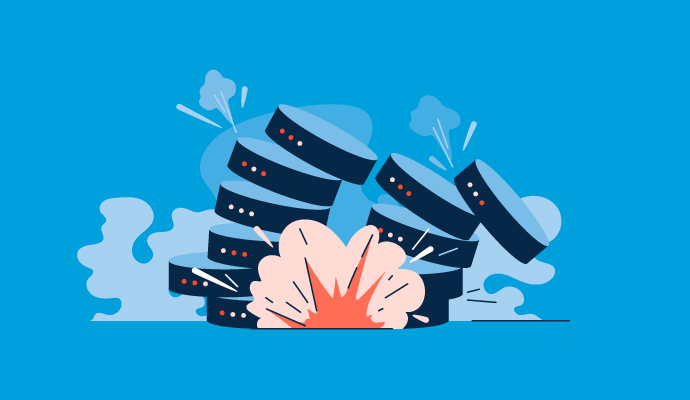Leading Tips for Ensuring Secure Data Destruction in Your Cyber Security Strategy
Leading Tips for Ensuring Secure Data Destruction in Your Cyber Security Strategy
Blog Article
The Vital Nature of Data Damage in Upholding Computer Safety Providers and Protecting Versus Unauthorized Accessibility
In a period where information breaches and identity theft are significantly common, the significance of efficient information destruction can not be overemphasized. Numerous approaches, from data cleaning to physical devastation, serve as critical safeguards against unauthorized accessibility.
Value of Information Destruction
In a progressively electronic world, the value of data damage can not be overemphasized. As organizations amass vast quantities of delicate info, the prospective repercussions of falling short to correctly get rid of and take care of of that information end up being increasingly extreme. Information breaches, identification theft, and business reconnaissance position significant threats, highlighting the requirement of effective information damage methods.
Furthermore, as innovation advances, so as well do the approaches whereby harmful stars seek to exploit sensitive information. Organizations has to stay proactive and cautious in their data damage strategies to guard against these advancing risks. By focusing on data damage, business not just safeguard their properties but also foster trust fund among clients and stakeholders, demonstrating a commitment to liable information administration and protection methods.
Approaches of Effective Data Devastation
To make sure the total and irreversible damage of sensitive data, companies can use a range of effective methods tailored to their certain demands. Among the most typical approaches is data cleaning, which entails utilizing specialized software application to overwrite existing information multiple times, making recuperation essentially impossible. This is especially helpful for solid-state drives and hard drives, where typical removal techniques are inadequate.
One more efficient strategy is degaussing, which utilizes strong electromagnetic fields to interfere with the magnetic domain names on storage space media, making the data irretrievable. This method is especially fit for magnetic storage space gadgets, such as tape drives and hard drives.
Physical destruction is also a practical option, entailing the shredding, squashing, or incineration of storage space tools. This technique warranties that information can not be recouped, making it excellent for companies taking care of highly delicate information.

Conformity With Data Defense Regulations
Organizations must not just focus on efficient information destruction approaches however additionally guarantee conformity with data defense regulations that regulate exactly how sensitive details is handled and disposed of. Complying with these regulations is crucial for keeping and guarding individual information customer trust fund. Rules such as the General Information Defense Policy (GDPR) in the European Union and the Medical Insurance Portability and Responsibility Act (HIPAA) in the United States impose stringent guidelines on data monitoring, that include demands for the protected disposal of sensitive info.
To attain conformity, companies need to carry out thorough information devastation plans that straighten with these lawful structures. This consists of recognizing information that needs damage, establishing protocols for secure methodsâEUR" such as shredding physical media or using software that meets industry standards for information wipingâEUR" and keeping thorough documents of damage tasks. Regular audits needs to be carried out to guarantee adherence to these plans and click here to read to determine any type of prospective areas for improvement.
Failure to follow information security guidelines can bring about considerable legal implications, including hefty penalties and damage to a company's credibility. Incorporating conformity into information destruction techniques is not only a legal obligation however also a critical component of a durable information protection technique.
Consequences of Poor Information Handling
Poor data handling can cause extreme effects that prolong past instant operational obstacles. Organizations might face significant economic losses due to information violations, which frequently cause costly remediation initiatives, lawful costs, and regulatory fines. These economic effects can stress sources and More Help prevent growth, eventually influencing an organization's lower line.
Additionally, inadequate data handling can drastically damage an organization's track record. Clients, stakeholders, and companions might shed rely on an entity that stops working to protect delicate info, bring about decreased client commitment and prospective loss of company chances. This disintegration of count on can take years to restore, if it can be restored in any way.
Furthermore, companies might deal with lawful implications emerging from non-compliance with information defense regulations. Such infractions might cause examinations and charges, compounding the financial concern and additional tainting the organization's picture.
In the world of cybersecurity, poor data monitoring practices can create vulnerabilities that make systems more susceptible to unauthorized access and cyberattacks. Eventually, these consequences underscore the vital value of carrying out robust information handling procedures to safeguard sensitive info and maintain business integrity.
Ideal Practices for Secure Information Disposal


Firstly, information need to be identified according to its sensitivity. Delicate details calls for extra strenuous disposal techniques, such as shredding physical files and utilizing innovative software program for electronic data wiping. Using qualified data damage solutions makes certain compliance with industry regulations and requirements.
Secondly, organizations need to apply a data disposal plan that mandates regular audits. This plan must lay out the treatments for data retention and destruction, making certain that out-of-date information is gotten rid of without delay and securely. Educating employees on these procedures is necessary to cultivating a society of protection awareness.
Finally, preserving in-depth records of disposed information improves liability and supplies a clear audit trail. This paperwork should consist of the kind of data destroyed, the approach made use of, and the date of disposal.
Final Thought
In conclusion, the vital of effective data damage is evident in its duty in enhancing computer system safety and security services and alleviating unauthorized accessibility dangers. Adopting durable methods such as data cleaning, degaussing, have a peek here and physical damage, together with compliance with laws like GDPR and HIPAA, is essential for securing delicate information. Overlooking correct information disposal methods can lead to severe effects, consisting of data violations and legal consequences. Applying best practices in secure data disposal ultimately strengthens business integrity and customer trust.
In an age where information violations and identity burglary are significantly common, the importance of effective information damage can not be overemphasized. data destruction. Data violations, identity theft, and corporate espionage posture substantial dangers, underscoring the requirement of efficient information devastation techniques
Conformity with laws such as GDPR and HIPAA requireds that organizations execute rigid data defense measures, consisting of the secure devastation of data at the end of its lifecycle.
By focusing on data devastation, firms not just safeguard their properties yet likewise foster depend on amongst clients and stakeholders, demonstrating a commitment to accountable information management and protection methods.
Organizations should not only concentrate on efficient data destruction methods but likewise make sure conformity with information defense guidelines that govern exactly how sensitive details is managed and disposed of.
Report this page